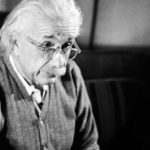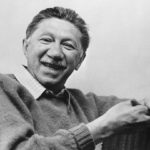When it comes to Psychology and Motivation, the increasingly pending question that one mainly faces is how exactly does motivation occur in an individual? The “how” question is dealt by the Process Theories of Motivation. Over the years many theorists, scientists and psychologists have tried to explain exactly what motivates an individual in a work place. One of these psychologist is Vincent Vroom with his Expectancy Theory.
Work place motivation is a very intriguing topic, for both the employees as well as the employers. Through the years, we have received Abraham Maslow’s Theory, Alderfer’s Theory, McClelland’s Theory, and more specifically, Fredrick Herzberg’s Theory when it comes to work place motivation. However, Vincent Vroom discovered that in a work-place, a person’s goals and motivation towards it wasn’t as simple as it was first concluded by other theorists, and so he bought forward his Expectancy Theory.

Table of Contents
Vroom’s Expectancy Theory and It’s Basic Idea:
Vroom’s Theory firstly stated that workplace behavior is a result of an individual’s conscious choices which they pick from other given alternatives. The basic purpose of this conscious choice is to minimize pain and maximize pleasure. Vroom’s Theory assumes that workplace motivation and behavior wasn’t as straightforward as it was first imagined to be, but rather states that an employee’s performance was a result of his personality, talents, skills, capability, knowledge and experience. This theory includes three elements which help make an individual decide on a conscious choice. The elements are: Expectancy, Instrumentality and Valance.

Vroom’s Motivational Force Formula:
Using the three elements in Vroom’s Expectancy Theory, Vincent Vroom presented a formula for Motivational Force:
| Motivational Force = Expectancy x Instrumentality x Valance |
Elements in Vroom’s Expectancy Theory:
As mentioned above, Vroom presented three elements which make up the motivational force in employees when it comes to completing a task and the individual’s conscious choices.
A) Expectancy:
This first element in Vroom’s Expectancy Theory is Expectancy. This basically refers to the belief of an individual that a higher quality of effort will result into a higher quality performance. Vincent Vroom lists three factors which affect this element:
a) The individual possessing the right material for the performance of the task or job.
b) The individual being equipped with the right skills in relation to the performance of the task or job.
c) The individual having or being granted the appropriate supervision for the support in the performance of the task or job.

B) Instrumentality:
The second element in Vroom’s Expectancy Theory in Instrumentality. This element basically refers to the belief or confidence of the individual that they will be rewarded after the completion of the task in need of the performance. Vincent Vroom lists several factors which affect this element. They are as follows:
a) A simple, easy and clear understanding between the task and the reward.
b) Proper knowledge of the rules and regulations to attaining the said reward.
c) Transparency of the whole process.

C) Valance:
The third and last element present in Vroom’s Expectancy Theory is Valance. This element basically refers to individuals own perception of the reward, i.e. the personal importance the person places on the reward. The higher the importance is of the reward to the individual, the better the motivation to perform the task efficiently, and the lower the importance is of the reward to the individual, the worse the motivation to perform the task efficiently. For example: on the reward as a car provided by the firm, over the completion of the task, an employee is who is lacking a good quality car will be extremely motivated to achieve the task efficiently as he has a personal importance placed on the reward. On the other hand, a person who already has the sufficient amount of cars will not be extremely motivated by the same reward.

Vincent Vroom believed that a positive relation between effort and the actual performance was a necessity to a high quality delivery of the task. The Expectancy Theory states that in order to improve the motivation in employees, there must be a clear understanding between the efforts they will put in into the job and the outcome they will receive, i.e. the reward. The greatest sense of motivation occurs in an employee when the individual has placed a personal value on the reward. Employees and employers both should be aware of the following process and perception of the worker:
a) Higher effort will result in a higher quality performance.
b) The higher quality performance will lead to achieving bigger and better rewards.
c) The bigger and better offered reward will be appreciated by the worker themselves.
In the case of a deficiency in any of the factors mentioned above, there will be a decline observed in the employees motivational force which in turn will lead to a lower rate of productivity. Out of the above factors, the last factor is thus by far, the most important as there should be a personal motivation involved in order to properly motivate an employee.

In conclusion, we all are constantly thirsting for some form of motivation when it comes to our work; we often tend to slack off of our tasks into misery and then worry about the upcoming deadlines – the constant ups and downs when it comes to our workplace motivation is considered a norm. However, through Vincent Vroom’s expectancy Theory, after realizing and recognizing the elements personal to us, we can help ourselves to achieve bigger and better.

motivation process thepries of motibvation Psychology vincent vroom vroom's expectancy theory
Last modified: August 10, 2018











